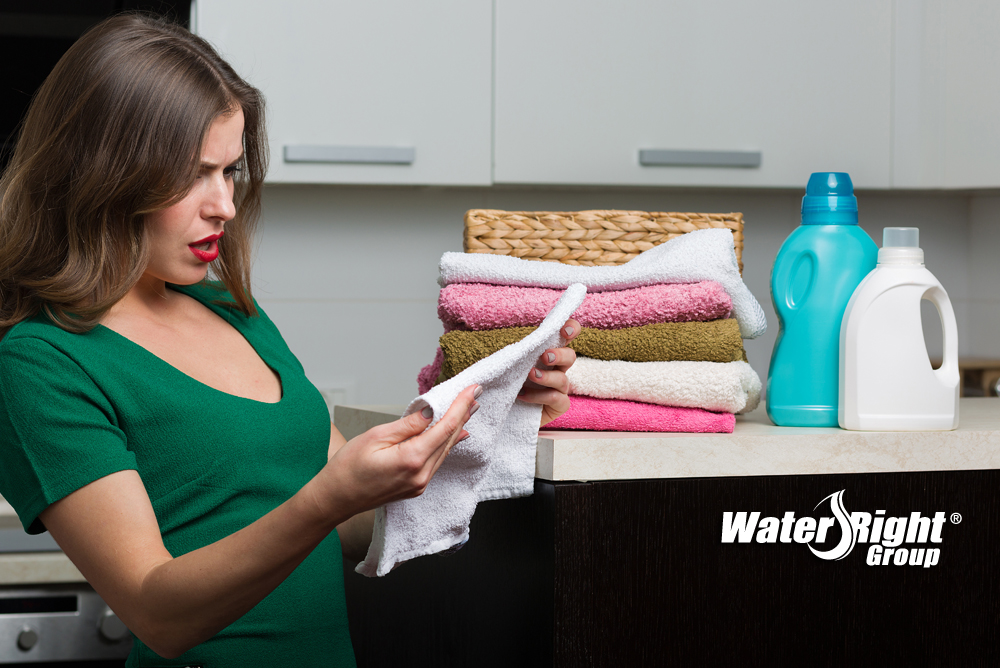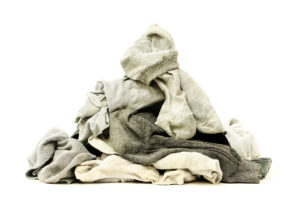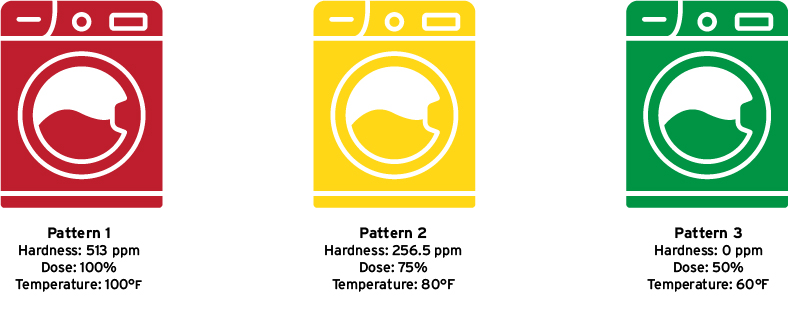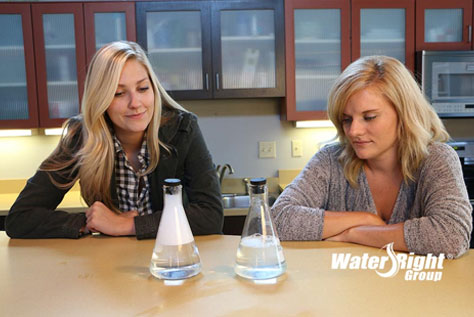
Why Hard Water Ruins Your Laundry (And How to Fix It)
If you question whether your clothes look and feel clean coming out of the washing machine, you’re not alone. Issues with laundry such as yellowing or graying clothes and stiff towels are not uncommon, and if you’re experiencing any of the following issues at home, you are likely dealing with a hard water problem.
Common concerns associated with hard water include:
- Laundry grays or yellows easily
- Fabric is stiff and not fluffy
- Clothes are weakened or tear easily
- White or gray streaks appear on colored clothes
Why Hard Water and Laundry Don’t Mix
Hard water contains dissolved compounds of calcium and magnesium – and, simply put, those minerals do not play nice with detergents. The greater the mineral count, the harder the water and the larger the impact could be on laundry.
A study by Purdue University found that clothing washed in hard water wears out 15 percent faster than clothing washed in soft water.
Hard water prevents water from mixing with detergent to form an effective cleaning agent. The calcium minerals bond with the soap to create a detergent curd that sticks to the fabric fibers, drawing in more dirt than before you washed your clothes. Over time, detergent residue can turn your white clothes gray or yellow, and you may even discover white or gray streaks on your colored clothes.
This buildup is also what makes laundry feel stiff and crusty. When this happens, fabric is less likely to flex, creating more friction that causes unnecessary wear-and-tear on your laundry.
To combat this issue, homeowners resort to using even more detergent and hotter water, resulting in additional expenses. At the end of the year, your bills have increased, you’ve spent more in detergent, and you’ve ultimately had to replaced damaged, worn clothing.
“The Environmental Protection Agency says the average family washes nearly 400 loads of laundry a year – more than load a day – and Americans spend more than $3 billion on detergent,” explained a CBS News article. “Bear in mind that 90 percent of the energy used by a washing machine is for heating water; cold water washing can yield significant energy savings.”
All of this is likely the reason why the average American household spends close to $500 on laundry per year, including electricity and laundry supplies – a hefty price that can be easily be controlled.
A study conducted by the Battelle Memorial Institute and Water Quality Association proves the ineffectiveness of washing laundry in hard water, shining light on the benefits of a water softener.
Using three different washing patterns with varying water hardness levels, detergent doses, and water temperature (outlined in the graphic below), eight different detergents (six liquid and three powder detergents), and nine common stain agents, researchers exposed eye-opening results.

Observation 1: Stain removal increases dramatically when hardness is removed, even when the detergent dosage level and water temperature are also lowered.
Observation 2: When water of any hardness level is softened prior to its use in washing, the detergent can be reduced by 50 percent and the water temperature can be reduced to 60°F (from 100°F) and still achieve the same or better stain removal, yielding brighter clothes.
Conversely, reduction of hardness is significantly more effective than increasing temperatures or detergent dose.
Observation 3: Softened water requires less detergent and saves energy by lowering water temperatures while maintaining or improving wash quality.
These results were true for all stain types and detergents tested and verified for top-load and high-efficiency front-loading washers.
Ultimately, better performance and savings can be found using softened water. That means buying less laundry detergent, saving on utility bills, and clothes last longer and look better. Not to mention, soft water allows appliances to last longer. Moral of the story, if you want cleaner clothes, sheets, and towels, get a water softener.
Fixing the Problem with Soft Water
If you suspect hard water is causing a toll on your clothing, you should begin by determining if you truly have hard water.
Start with a simple home test. This soap test will tell you if you have hard water or not; it will not tell you the approximate level of hardness, which is measured in parts per million (ppm).
First, fill a clear container with water. Add approximately 10 drops of soap into your container and shake vigorously. If the container has a good amount of suds at the top and the water below is clear, you likely have soft water.

Flask on the left is soap test performed with soft water, flask on the right is the result with hard water
On the other hand, if your water is cloudy and doesn’t have a thick layer of suds on the top, you have a hard water problem. What occurred during this test occurs on a larger scale in your washing machine.
Now that you’ve confirmed you have hard water, you’ll want to call a water treatment professional to determine the exact hardness of your water. He or she will also test for contaminants which may be resulting in other water problems throughout your house.
Third-party research and tests prove soft water’s effectiveness on laundry. With soft water you’ll likely notice other benefits around your house, including:
- Less soap scum in bathrooms
- Cleaner, less-slimy feeling hair
- Softer, less-dry skin
- Longer lasting appliances
- More efficient dishwashing sessions
Stop replacing your wardrobe so often and learn more about the difference between hard and soft water. Then talk to a water treatment professional to discuss options tailored to your specific needs.

